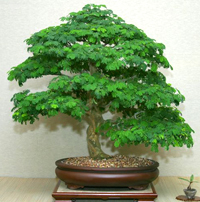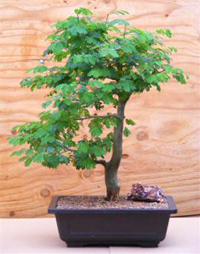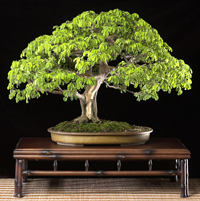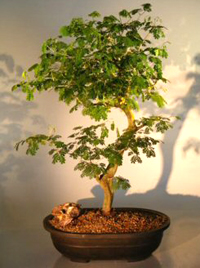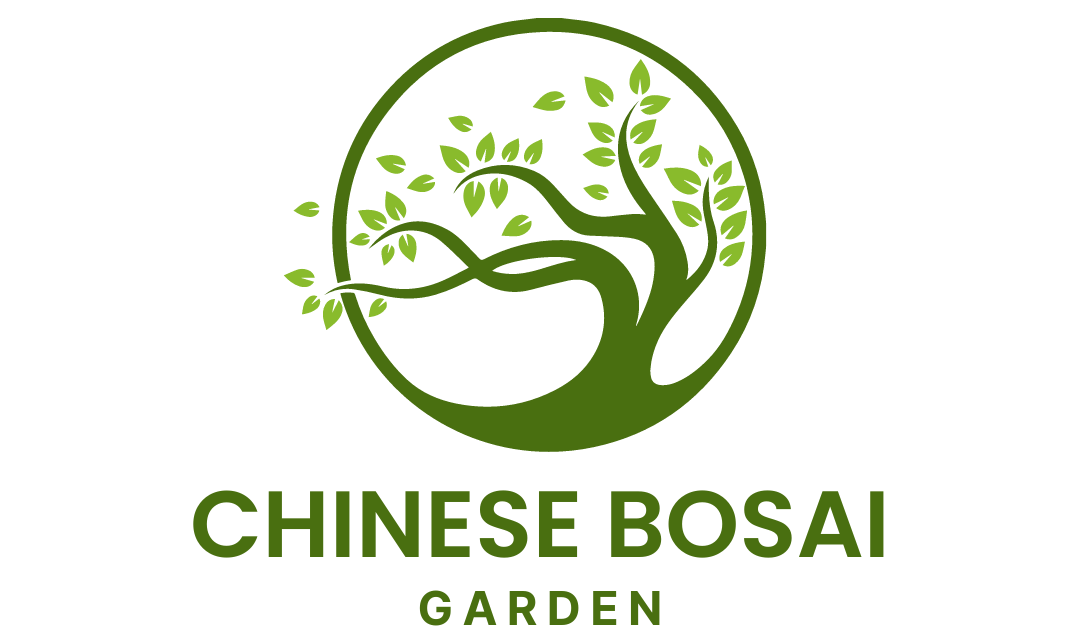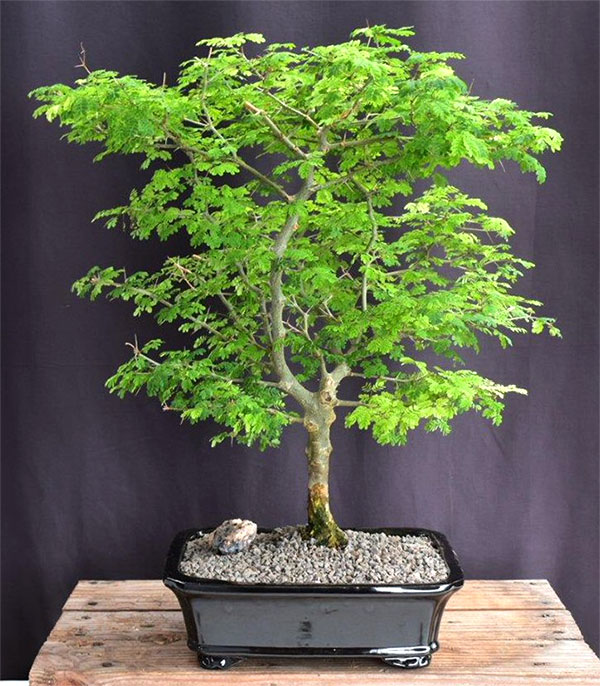
The Brazilian Rain Tree Bonsai, scientific name Pithecellobium tortum, is an ideal candidate for bonsai because of its unique features such as the twisted trunk, exfoliating bark, and delicate compound leaves. It produces lovely white puff-like flowers that are sweetly scented.
Additional Information
Family: Leguminosae
Scientific name: Pithecellobium tortum syn. Cathormion tortum, Feuilleea torta, Chloroleucon tortum.
Common name: Brazilian Rain Tree, Jurema, Jurema Branca.
Origin: Native to South America, more specifically rainforests of Brazil.
Appearance: This hardwood tree has delicate branches and tiny light-green compound leaves. Leaves fold at night and when the tree feels stressed. It has a very attractive, flattened, “muscular” trunk that exfoliates as the tree matures.
Thin layers of the outer bark peel off revealing a nearly white color underneath. This creates a beautiful contrast between bark colors. This tree is covered with large thorns that grow on the trunk and on the branches. If removed, they will not grow in the same spot.
Flowering: In spring it produces white, fragrant, puff-type blossoms that turn yellow after a few days.
Outdoor/Indoor Use: Both. You can grow it outdoors if you live in a warm tropical climate.
Light Requirements: It prefers full sun but should be protected from direct sun during hot summer months. For the best result, let it enjoy the morning sun and provide it with some shade during the hottest part of the day.
Water Requirements: Needs regular watering. Grows best in moist but well-drained soil. Since the Brazilian Rain Tree is susceptible to root rot, do not allow it to sit in soggy soil. It will require more water during hot months and less in the winter.
Hardiness: Grows best in the USDA Zones 10 – 11. Should be protected from temperatures below 45F.
Insects and Diseases: It is generally a very healthy plant.
Propagation: By cuttings and air-layering.
Buy Brazilian Rain Tree Bonsai »
